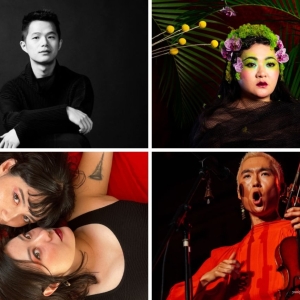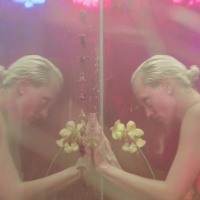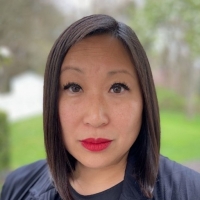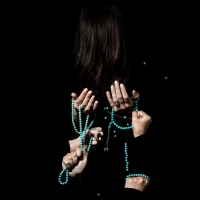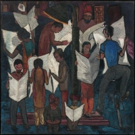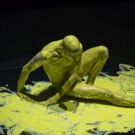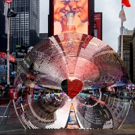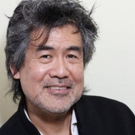
At a Glance
Ages: All
Allows Food/Drink: No
Luggage Storage: No
725 Park Ave, New York, NY 10021 Get Directions
Asia Society Museum Videos
Asian Diaspora Project takes a look at Andy Kim’s inspiring journey in to politics. From a childhood shaped by his South Korean immigrant parents’ values of hard work and community to representing New Jersey in Congress, Kim’s story is a testament to resilience and dedication. Kim’s rise to the Senate is a powerful reminder that representation matters. His leadership shows young Asian Americans that their voices belong in shaping the future of this country.
NEW YORK, October 24, 2024 — Elizabeth Chai Vasarhelyi and Jimmy Chin, Academy® Award-winning filmmakers talk about their Asian heritage, making cultural connections, and their craft at the 2024 Asia Game Changer Awards. (7 min., 28 sec.) Watch their acceptance speech: https://youtu.be/7OQZcB4iYGw Full list of 2024 honorees: https://asiasociety.org/asia-game-changer-awards/2024-asia-game-changer-awards Subscribe for more videos like this: http://AsiaSociety.org/YouTube --- Support Asia Society today: http://AsiaSociety.org/Donate --- Subscribe to our newsletter to stay connected: https://asiasociety.org/email-subscriptions --- Facebook: http://facebook.com/AsiaSociety Instagram: http://instagram.com/AsiaSociety Twitter: http://twitter.com/AsiaSociety LinkedIn: http://linkedin.com/company/asia-society/ #asiasociety #asiasocietynewyork #asiagamechanger #ElizabethChaiVasarhelyi #ChaiVasarhelyi #JimmyChin #FreeSolo #JanetYang #Arts #Filmmaking #AAPI #AsianAmerican
NEW YORK, October 24, 2024 — Acclaimed journalist, Juju Chang of ABC News, discusses the importance of AAPI representation and breaking down stereotypes at the 2024 Asia Game Changer Awards. (6 min., 7 sec.) Full list of 2024 honorees: https://asiasociety.org/asia-game-changer-awards/2024-asia-game-changer-awards Subscribe for more videos like this: http://AsiaSociety.org/YouTube --- Support Asia Society today: http://AsiaSociety.org/Donate --- Subscribe to our newsletter to stay connected: https://asiasociety.org/email-subscriptions --- Facebook: http://facebook.com/AsiaSociety Instagram: http://instagram.com/AsiaSociety Twitter: http://twitter.com/AsiaSociety LinkedIn: http://linkedin.com/company/asia-society/ #asiasociety #asiasocietynewyork #asiagamechanger #AsianAmerican #AAPI #JujuChang #Journalism
NEW YORK, October 24, 2024 — Norman Chen, CEO of The Asian American Foundation (TAAF), on recognizing Asian achievement and representation at the 2024 Asia Game Changer Awards (7 min., 22 sec.) Watch his acceptance speech: https://youtu.be/SmSHmzRP1Z0 Full list of 2024 honorees: https://asiasociety.org/asia-game-changer-awards/2024-asia-game-changer-awards Subscribe for more videos like this: http://AsiaSociety.org/YouTube --- Support Asia Society today: http://AsiaSociety.org/Donate --- Subscribe to our newsletter to stay connected: https://asiasociety.org/email-subscriptions --- Facebook: http://facebook.com/AsiaSociety Instagram: http://instagram.com/AsiaSociety Twitter: http://twitter.com/AsiaSociety LinkedIn: http://linkedin.com/company/asia-society/ #asiasociety #asiasocietynewyork #asiagamechanger #TAAF #TheAsianAmericanFoundation #NormanChen #AsianAmerican #AAPI
NEW YORK, October 24, 2024 — Christiane Amanpour, acclaimed journalist and CNN's chief international anchor, discusses her heritage and search for truth at the 2024 Asia Game Changer Awards. (5 min.) Watch her acceptance speech: https://youtu.be/H9RTqB5xMYc Full list of 2024 honorees: https://asiasociety.org/asia-game-changer-awards/2024-asia-game-changer-awards Subscribe for more videos like this: http://AsiaSociety.org/YouTube --- Support Asia Society today: http://AsiaSociety.org/Donate --- Subscribe to our newsletter to stay connected: https://asiasociety.org/email-subscriptions --- Facebook: http://facebook.com/AsiaSociety Instagram: http://instagram.com/AsiaSociety Twitter: http://twitter.com/AsiaSociety LinkedIn: http://linkedin.com/company/asia-society/ #asiasociety #asiasocietynewyork #asiagamechanger #CHristianeAmanpour #CNN #Journalism
NEW YORK, October 24, 2024 — Ida Liu, Global Head of Citi Private Bank, talks about the importance of celebrating Asian achievement and representation at the 2024 Asia Game Changer Awards. (3 min., 17 sec.) Full list of 2024 honorees: https://asiasociety.org/asia-game-changer-awards/2024-asia-game-changer-awards Subscribe for more videos like this: http://AsiaSociety.org/YouTube --- Support Asia Society today: http://AsiaSociety.org/Donate --- Subscribe to our newsletter to stay connected: https://asiasociety.org/email-subscriptions --- Facebook: http://facebook.com/AsiaSociety Instagram: http://instagram.com/AsiaSociety Twitter: http://twitter.com/AsiaSociety LinkedIn: http://linkedin.com/company/asia-society/ #asiasociety #asiasocietynewyork #asiagamechanger #IdaLiu #CitiBank #AsianRepresentation
More in The Upper East Side
More Museums
- The Tenement Museum
- New Museum
- International Center of Photography
- Museum at Eldridge Street
- National Museum of the American Indian
- National September 11 Memorial & Museum
- The Rubin Museum of Art
- Whitney Museum of American Art
- The Morgan Library & Museum
- Museum of Modern Art (MoMA)
Asia Society Museum Frequently Asked Questions
The closest subway stops to Asia Society Museum at 725 Park Ave are:
1. 68th Street-Hunter College Station (6 train): This station is located at Lexington Avenue and 68th Street, just a short walk from the museum. You can take the 6 train to this station and then walk east on 68th Street to reach the museum.
2. 63rd Street-Lexington Avenue Station (F and Q trains): This station is located at Lexington Avenue and 63rd Street, also within walking distance of the museum. From this station, you can walk north on Lexington Avenue and then turn right onto East 70th Street to reach the museum.
Both of these subway stations are conveniently located near the Asia Society Museum and provide easy access to other parts of the city as well.
As for related recommendations, I suggest checking out Central Park, which is just a few blocks west of the museum. It's a beautiful green oasis in the heart of the city and offers a variety of activities such as walking, biking, and picnicking. You can also visit the nearby Metropolitan Museum of Art, which is one of the world's largest and most renowned art museums.
For subway updates and information on service changes, delays, and planned maintenance, you can visit the official website of the Metropolitan Transportation Authority (MTA) at www.mta.info. They provide real-time updates and helpful resources to make your subway journey smooth and hassle-free.
Enjoy your visit to the Asia Society Museum and have a great time exploring New York City!
The closest bus stops to Asia Society Museum at 725 Park Ave in New York City are:
1. Madison Ave/E 70 St: This bus stop is served by the M1, M2, M3, and M4 buses. You can check for updates on the MTA website [here](https://new.mta.info/).
2. Lexington Ave/E 70 St: This bus stop is served by the M101, M102, and M103 buses. You can check for updates on the MTA website [here](https://new.mta.info/).
Please note that bus routes and schedules are subject to change, so it's always a good idea to check for updates before your trip. Enjoy your visit to Asia Society Museum!
The ideal length of time to plan to spend at the Asia Society Museum in New York City varies depending on your level of interest in Asian art and culture. On average, visitors typically spend about 1-2 hours exploring the museum's exhibitions and galleries. However, if you are a true art enthusiast or have a deep interest in Asian culture, you may want to allocate more time to fully immerse yourself in the museum's offerings.
The Asia Society Museum showcases a diverse range of contemporary and traditional art from across Asia, including paintings, sculptures, ceramics, textiles, and more. In addition to the permanent collection, the museum also hosts temporary exhibitions that rotate throughout the year, so be sure to check their website for the latest information on what is currently on display.
While exploring the museum, take your time to appreciate the intricate details and stories behind each artwork. You may also want to participate in any guided tours or educational programs offered by the museum to enhance your experience and gain deeper insights into the exhibits.
Ultimately, the amount of time you spend at the Asia Society Museum is up to you and your personal interests. Whether you're a casual visitor or an avid art enthusiast, a visit to this museum is sure to be a rewarding and enriching experience.
The Asia Society Museum in New York City has a strict no food or drink policy inside the exhibition areas. This policy helps to preserve the artwork and maintain a clean and respectful environment for all visitors. However, there is a café located on the premises where you can enjoy a meal or grab a beverage before or after your visit to the museum. The café offers a variety of delicious options, including both Asian and Western cuisine, and is a great place to relax and refuel. So, while you can't bring food or drinks into the museum, you can definitely satisfy your cravings at the café!
The Asia Society Museum in New York City does not have a luggage storage facility on-site. However, there are several options available nearby where you can securely store your belongings while you visit the museum.
One convenient option is to use a luggage storage service such as Vertoe or LuggageHero. These services have partnerships with local businesses, including hotels and shops, where you can drop off your bags for a small fee. They provide secure storage and often have multiple locations throughout the city, making it easy to find one close to the Asia Society Museum.
Another option is to check if your hotel offers luggage storage for guests. Many hotels in New York City provide this service, allowing you to store your bags before check-in or after check-out.
Lastly, if you are traveling with larger luggage or have specific needs, you may want to consider using a traditional luggage storage facility. There are several of these facilities located near popular tourist areas and transportation hubs in the city.
Remember to plan ahead and check the operating hours and fees of any luggage storage service or facility you choose. This will ensure a smooth and hassle-free visit to the Asia Society Museum and other attractions in New York City.
Yes, the Asia Society Museum in New York City is definitely worth a visit for visitors from other countries and non-English language speakers. The museum is known for its diverse collection of Asian art, including ancient artifacts, contemporary works, and rotating exhibitions. It offers a unique opportunity to explore the rich cultural heritage of Asia.
While English is the primary language used in the museum, there are several features that make it accessible and enjoyable for non-English speakers. The museum provides multilingual audio guides in various languages, including Mandarin, Japanese, and Korean, which offer detailed explanations and insights into the artworks on display. Additionally, the museum's signage and labels often include translations in multiple languages, making it easier for visitors to understand the context and significance of the artworks.
Furthermore, the Asia Society Museum frequently hosts cultural events, performances, and lectures that showcase the diverse traditions and customs of Asia. These events often incorporate music, dance, and other forms of expression that can be appreciated by all, regardless of language barriers.
Overall, the Asia Society Museum is a welcoming and inclusive destination for visitors from around the world. It offers a unique opportunity to immerse oneself in the art and culture of Asia, and its efforts to accommodate non-English speakers make it an excellent choice for international visitors.
The Asia Society Museum in New York City welcomes visitors of all ages! While the exhibits are designed to engage and educate visitors of various ages, children and adults alike can enjoy the diverse range of art and cultural displays. Families with children will particularly appreciate the museum's efforts to provide interactive and educational experiences. So, whether you're traveling with kids or exploring solo, the Asia Society Museum is a fantastic destination to immerse yourself in the rich and vibrant cultures of Asia.
Videos


